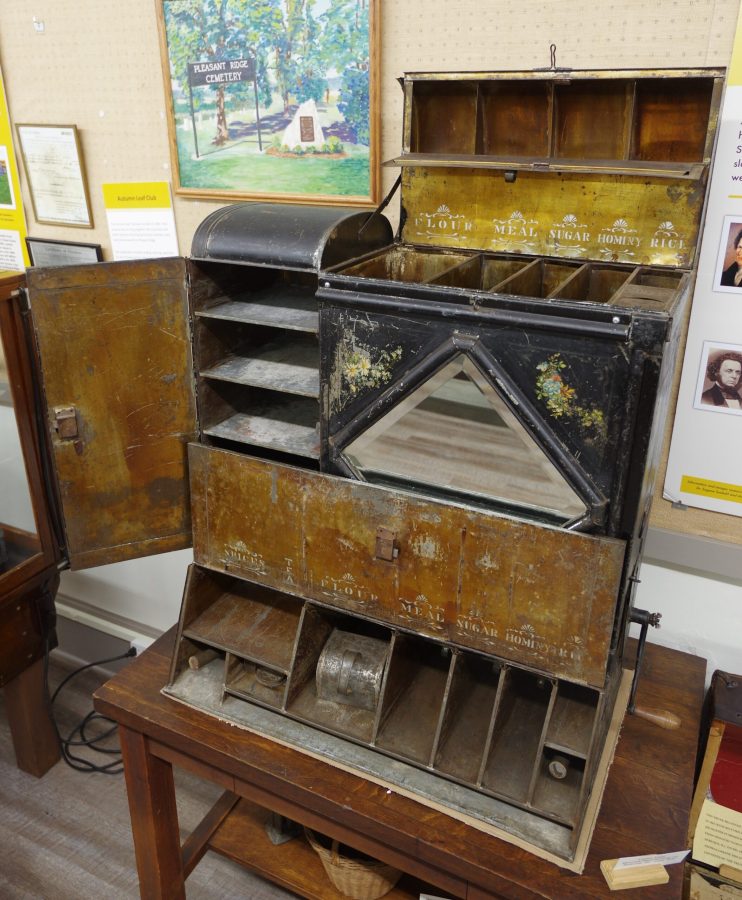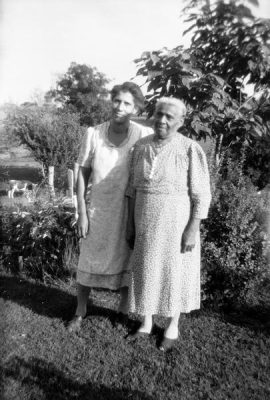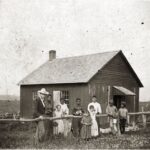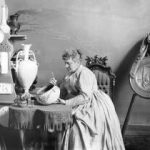Kitchens form a central part of the American experience. The Sanitary Metal Kitchen Cabinet, also known as the Mound City Kitchen Safe (circa 1906), fits into the history of American cookery, American kitchens, and American consumerism. Originally owned by members of the Shepard and Greene families of Pleasant Ridge, Wisconsin, this cabinet was first used by then eventually donated to the Grant County Historical Society in the 1950s by a descendant, Ollie Greene Lewis. Ollie, who passed away in 1959, had lived at Pleasant Ridge her entire life. This exceptional kitchen appliance reveals what it meant to be middle-class Black consumers in rural America at the turn of the twentieth century.
Manufactured by the Mound City Safe Company of St. Louis, the Sanitary Metal Kitchen Cabinet evolved from the tradition of Hoosier cabinets, and like its predecessor, the Kitchen Safe is part appliance and part furniture. Unlike the Hoosier cabinet, which is a free-standing, typically wooden furniture piece, the Mound City Kitchen Safe was made of sheet metal (enameled on the exteriors and lacquered on the interior) and was designed to sit upon a countertop to hold and organize many common ingredients for cooking and baking. Examples such as Ollie’s had labeled compartments to organize cooking ingredients, including 65 lbs of flour, 35 lbs of cornmeal, 20 lbs of rice, 50 lbs of sugar, 6 lbs of coffee, and 1 lb of tea.[1] Each section of the cabinet was labeled and loaded from the top, and could be dispensed at the bottom with scoops. Conveniently, the compartment in which coffee was stored also came with a grinder that dispensed the perfect amount of coffee. Where the diamond-shaped mirror sat, a tight box stored bakery goods so they would not go stale. A spice compartment came equipped with empty containers with perforated holes for spices. A compartment for cookbooks sat at the top of the cabinet, and it’s here that Ollie Greene Lewis likely stored her handwritten cookbook, which she also donated to the Grant County Historical Society.

Newspaper advertisements reveal how the object was marketed toward the middle class as “the most convenient and most sanitary kitchen cabinet on the market.”[2] In Wisconsin newspapers, like the Wausau Pilot, The Mound City Safe Company claimed, “Worry kills more than men at work. The same will apply to ladies; why not relieve the worry about mice, rats, and bugs getting into the material you cook with a Mound City Kitchen Safe.”[3] Another suggested, “Every wife ought to teach her husband to save money. It may come in useful for alimony, if he don’t get her a Mound City Safe.”[4] Advertisements such as these preyed on people’s fears and sold many kitchen safes to families across America, including Black families like the Greenes at Pleasant Ridge.

Thanks to Ollie Greene Lewis’s stewardship of her family legacy, this Mound City Sanitary Metal Kitchen Cabinet persists as an important piece of African American history in Wisconsin. Because there is little information about the Sanitary Metal Kitchen Cabinet or the specific brand of Mound City Kitchen Safes, newspaper ads from the early twentieth century are some of the few reminders of these extraordinary objects. It is likely that most of these metal cabinets wound up in scrap metal drives during the first and second World Wars, and by the 1940s, many viewed these objects as obsolete in comparison to more modern kitchen appliances.
This particular Sanitary Metal Kitchen Cabinet miraculously survived these nationwide scrap metal drives, and because of its association with the Shepard and Greene families, it demonstrates the success of African American agricultural families and the significance of Black farming communities like Pleasant Ridge.[5]
Written by Kamyria Gray-Dillard and Callie C. Smet, December 2023.
Footnotes
[1] Mound City Safe Company, “The Sanitary Metal Kitchen Cabinet,” Santa Ana Register (Santa Ana, California), 09 April 1909, 8.
[2] Ibid.
[3] “Short News Items,” Wausau Pilot (Wausau, Wisconsin), 01 January 1907, 8.
[4] “Short News Items,” Wausau Pilot (Wausau, Wisconsin), 12 March 1907, 5.
[5] Zachary Cooper, Black Settlers in Rural Wisconsin (Madison: State Historical Society of Wisconsin, 1977), 19-25; Eugene R.H. Tesdahl, “Lead, Slavery, and Black Personhood in Wisconsin,” Wisconsin Magazine of History (Summer 2019): 17-27.




